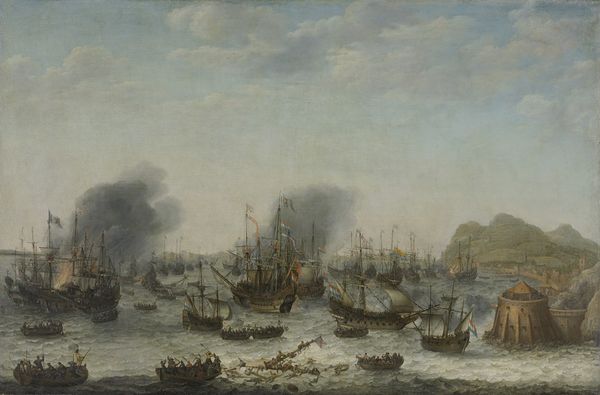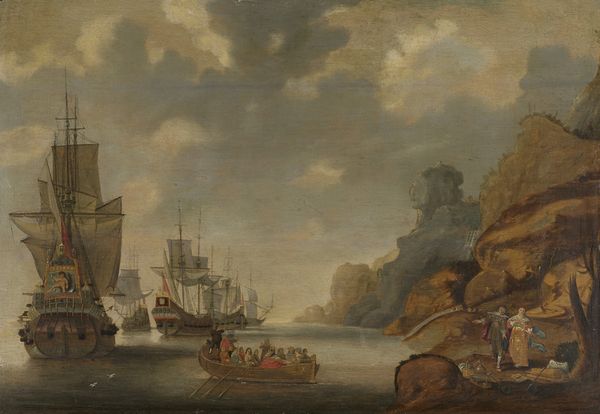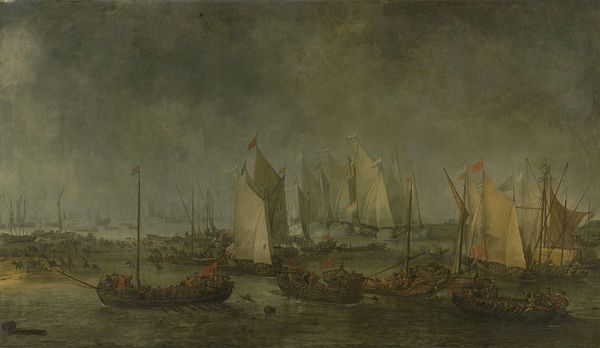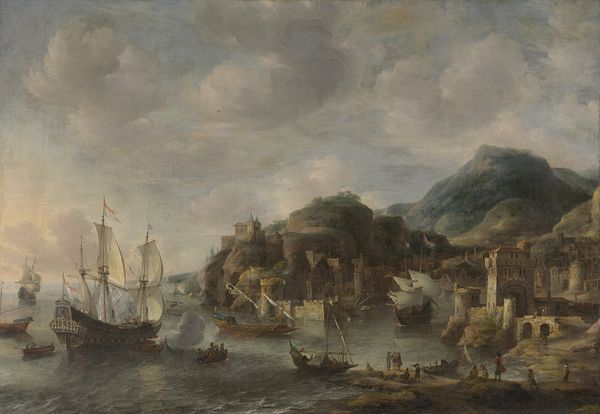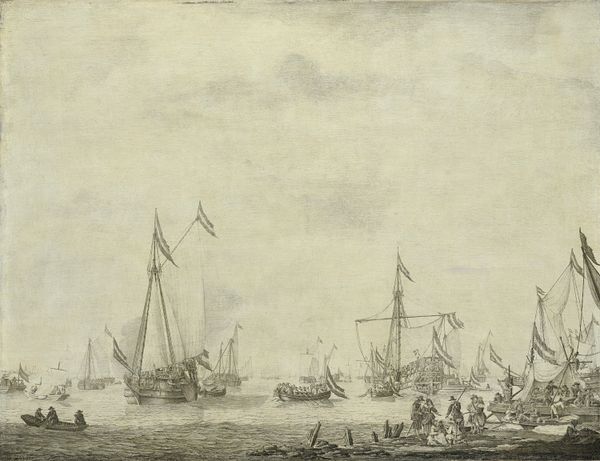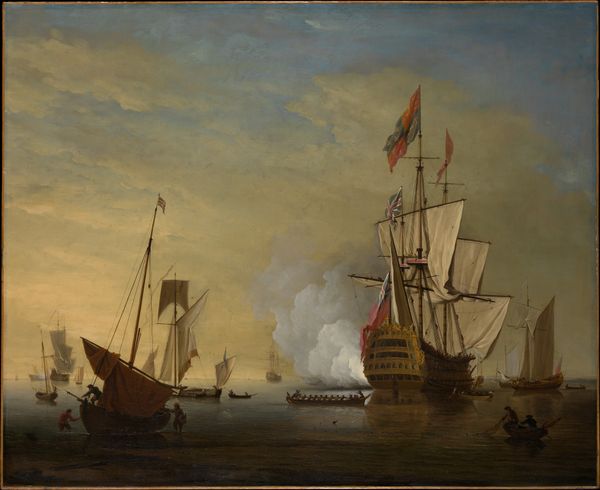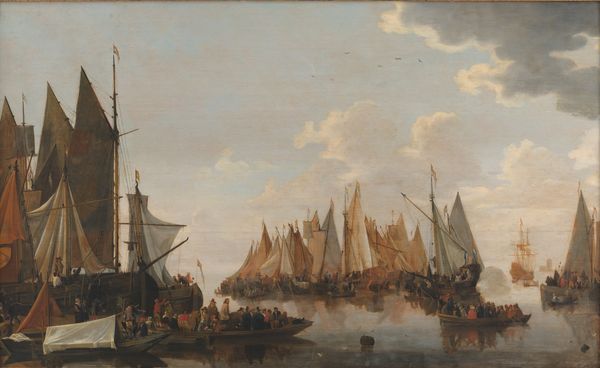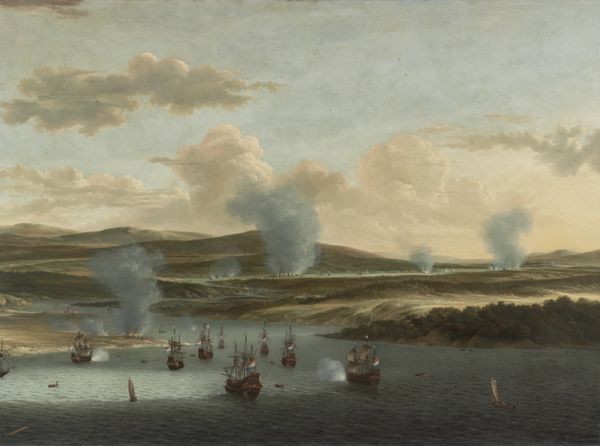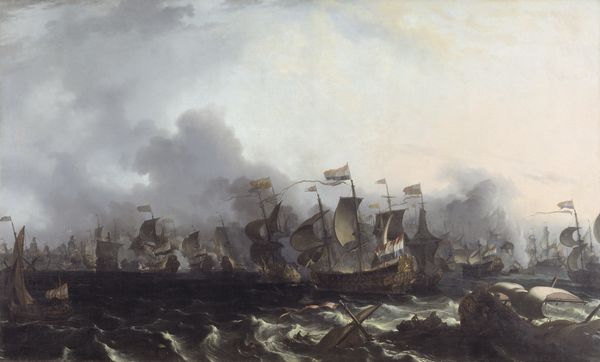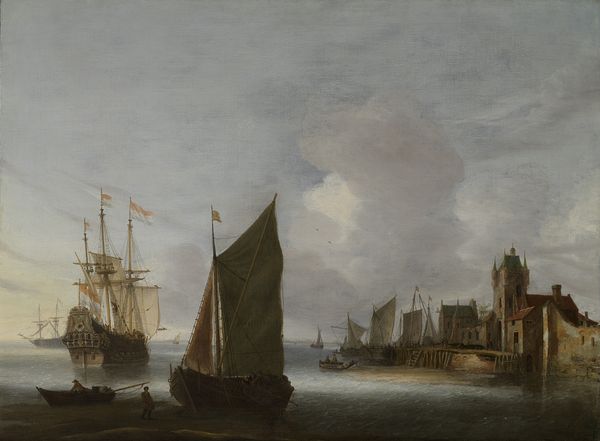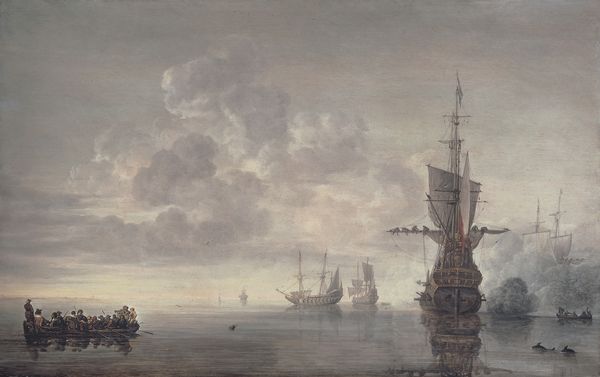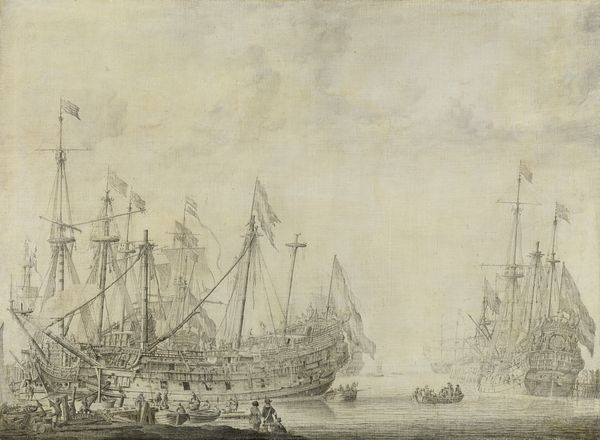
A Dutch Squadron under the Command of Cornelis Simonsz van der Veer Carrying Out a Surprise Attack on Three Portuguese Galleons in the Bay of Goa Velha, 30 September 1639 1653
0:00
0:00
painting, oil-paint
#
baroque
#
dutch-golden-age
#
painting
#
oil-paint
#
landscape
#
oil painting
#
underpainting
#
painting painterly
#
genre-painting
#
history-painting
Dimensions: support height 152.1 cm, support width 276 cm, outer size depth 8.5 cm
Copyright: Rijks Museum: Open Domain
Curator: Hendrick van Anthonissen created this compelling painting, now known as "A Dutch Squadron under the Command of Cornelis Simonsz van der Veer Carrying Out a Surprise Attack on Three Portuguese Galleons in the Bay of Goa Velha, 30 September 1639," sometime around 1653. Editor: It’s quite a dramatic scene! The way the light catches the smoke from the cannons creates such a tense, almost oppressive atmosphere. Curator: Absolutely. It depicts a significant naval engagement within the context of the Dutch-Portuguese War. Anthonissen wasn’t simply creating a landscape; he was capturing a moment of Dutch imperial expansion and military dominance. It speaks volumes about the rising power of the Dutch Republic and its challenge to Portuguese control in global trade routes. Editor: What strikes me, too, is how the artist utilizes the horizon line and atmospheric perspective. The detail diminishes further back in the composition, almost as if blurring with the heavy smoke clouds that surround the ships. The color palette, predominantly earth tones, emphasizes this intensity. Curator: I agree. We can't ignore the symbolic importance of the flags so prominently displayed on the Dutch ships, asserting a claim of dominance in this very visible territory. The painting was created not just to document an event but to legitimize and celebrate Dutch actions on a global stage. Editor: The ships are incredibly detailed; you can almost feel the texture of the wood and the ropes. He contrasts this acute realism with an almost dreamlike handling of the water and the coastal mountains, giving us this dynamic but subtly unsettling effect. It evokes power and danger but also, somewhat, reflects the Dutch skill in sailing the high seas. Curator: This artwork gives us a unique entry point for understanding the confluence of military action, art, and politics in the 17th century. We see, quite literally, how the Dutch constructed a narrative of their colonial ventures for the homeland. Editor: A final thought then, I think the artistic skill is as apparent as its propaganda intent, as Van Anthonissen melds meticulous detailing and nuanced light effects that leaves me intrigued to learn even more about this decisive maritime combat.
Comments
No comments
Be the first to comment and join the conversation on the ultimate creative platform.
